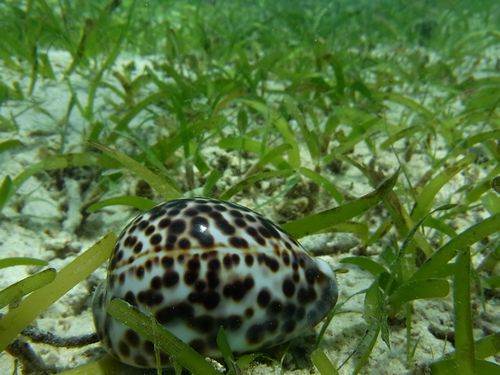January 1, 2011
NACS-J Releases Biodiversity Report on the Henoko and Oura Bay Areas at COP10
Keywords: Ecosystems / Biodiversity NGO / Citizen

Copyright Nature Conservation Society of Japan
The Nature Conservation Society of Japan (NACS-J) has been working to conserve biodiversity and raise awareness of its value and benefits in Japan for over 60 years. It released on September 28, 2010, the results of its urgent investigation conducted on July 24 and 25, 2010, in the Henoko Coast and Oura Bay areas of Okinawa Prefecture to highlight their importance. The society also presented its position paper for discussions at the Tenth Conference of the Parties to the Convention on Biological Diversity (CBD/COP10) held in October 2010 in Nagoya, Aichi Prefecture.
The society's research focused on about 488.3 hectares of seaweed beds, among the largest in Japan, that stretch along the Henoko coastal area. Designated by Okinawa Prefecture as a region where the environment must be strictly conserved, the area is still richly endowed with nature. As the Henoko coast and Oura bay areas maintain diverse ecosystems such as tidelands, seaweed beds, mud flats, mangrove forests and coral reefs, they nurture a bountiful sea with extremely rich biodiversity.
More than 362 species of epifaunal species (benthic fauna living on a hard sea floor or on other organisms) were identified in five locations. As seaweed grows stably here year-round, these areas are also very important for the species living on it. Here were found, for example, seven species of near-threatened types of seaweed, and shellfish living on seaweed leaves such as the rare Uneukitsubo (Alaba punctostriata) and near-threatened Emerald Nerite. Here is also the most important habitat in Japan for dugongs (related to manatees, these are large marine mammals, the most of which live in northern waters of Australia), a national natural treasure and critically endangered animal.
This kind of research is funded by donations to NACS-J nature conservation projects from across the country, and NAC-J is continuously asking for donations to support their future research.
Ministry Submits Japan's Proposal on Post-2010 Biodiversity Targets (Related JFS article)
http://www.japanfs.org/en/pages/029852.html
Japanese Cabinet Approves National Biodiversity Strategy 2010 for COP10 (Related JFS article)
http://www.japanfs.org/en/pages/030030.html
The Nature Conservation Society of Japan official website
http://www.nacsj.or.jp/english/
Posted: 2011/01/01 06:00:15 AM
Related
"JFS Newsletter"
- 'What Are the Roles of Zoos Today?' - Interview with Director of the Popular Asahiyama Zoo
- Nishiawakura's Initiative for 100% Energy Self-Sufficiency, and a Municipal ICO Scheme
- 15-Year Integrated Forest Environment Education in Shimokawa, Hokkaido to Support Sustainable Forest Management
- Fifth Contest to Award Excellent Environmental and Social Practices by Junior High, High School Students
- Increase Revenues without Increasing Catches -- How the Sustainable Sakura Shrimp Fishery in Suruga Bay Does It


